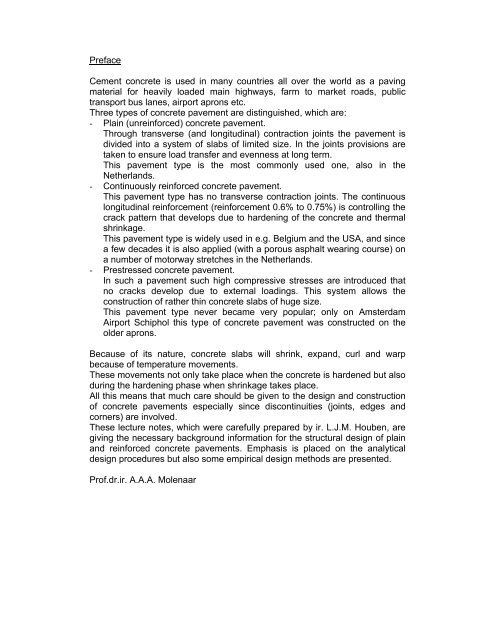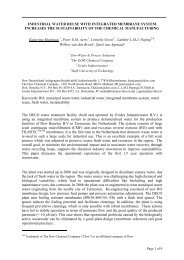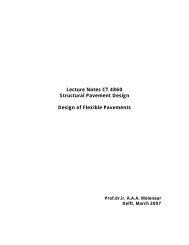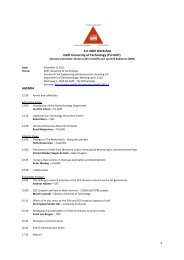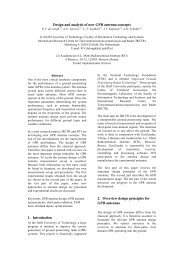CT4860 STRUCTURAL DESIGN OF PAVEMENTS
CT4860 STRUCTURAL DESIGN OF PAVEMENTS
CT4860 STRUCTURAL DESIGN OF PAVEMENTS
Create successful ePaper yourself
Turn your PDF publications into a flip-book with our unique Google optimized e-Paper software.
Preface<br />
Cement concrete is used in many countries all over the world as a paving<br />
material for heavily loaded main highways, farm to market roads, public<br />
transport bus lanes, airport aprons etc.<br />
Three types of concrete pavement are distinguished, which are:<br />
- Plain (unreinforced) concrete pavement.<br />
Through transverse (and longitudinal) contraction joints the pavement is<br />
divided into a system of slabs of limited size. In the joints provisions are<br />
taken to ensure load transfer and evenness at long term.<br />
This pavement type is the most commonly used one, also in the<br />
Netherlands.<br />
- Continuously reinforced concrete pavement.<br />
This pavement type has no transverse contraction joints. The continuous<br />
longitudinal reinforcement (reinforcement 0.6% to 0.75%) is controlling the<br />
crack pattern that develops due to hardening of the concrete and thermal<br />
shrinkage.<br />
This pavement type is widely used in e.g. Belgium and the USA, and since<br />
a few decades it is also applied (with a porous asphalt wearing course) on<br />
a number of motorway stretches in the Netherlands.<br />
- Prestressed concrete pavement.<br />
In such a pavement such high compressive stresses are introduced that<br />
no cracks develop due to external loadings. This system allows the<br />
construction of rather thin concrete slabs of huge size.<br />
This pavement type never became very popular; only on Amsterdam<br />
Airport Schiphol this type of concrete pavement was constructed on the<br />
older aprons.<br />
Because of its nature, concrete slabs will shrink, expand, curl and warp<br />
because of temperature movements.<br />
These movements not only take place when the concrete is hardened but also<br />
during the hardening phase when shrinkage takes place.<br />
All this means that much care should be given to the design and construction<br />
of concrete pavements especially since discontinuities (joints, edges and<br />
corners) are involved.<br />
These lecture notes, which were carefully prepared by ir. L.J.M. Houben, are<br />
giving the necessary background information for the structural design of plain<br />
and reinforced concrete pavements. Emphasis is placed on the analytical<br />
design procedures but also some empirical design methods are presented.<br />
Prof.dr.ir. A.A.A. Molenaar


